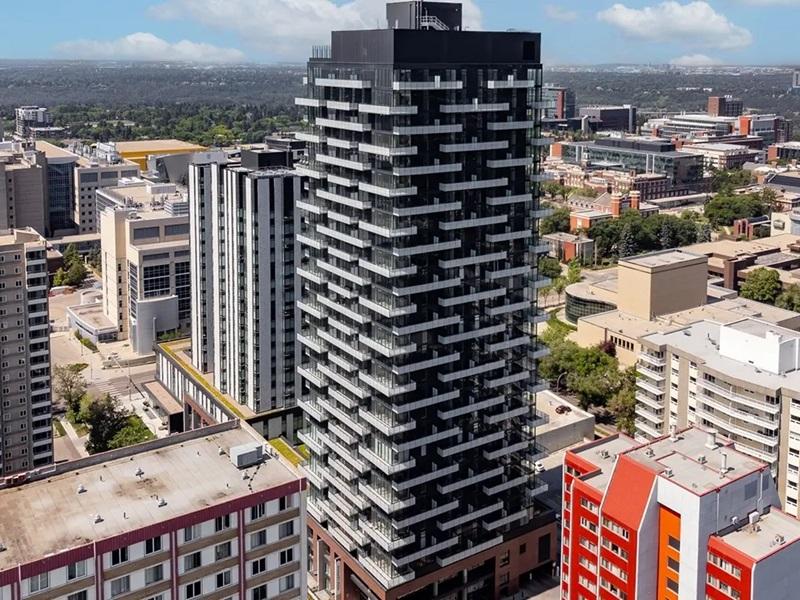
Bob Dhillon, the founder, president & CEO of Mainstreet Equity Corp., believes the time is now for his company to accelerate growth — citing a unique convergence of market forces, liquidity and a long-standing mid-market strategy rooted in Western Canada.
“I’ve never seen the stars line up more than right now,” Dhillon told RENX. “We’re at a critical size — 18,683 apartment units — and we’ve got liquidity in both 2025 and 2026. Our liquidity for 2025 is around $460 million.”
Dhillon said Mainstreet’s strategy and focus on Western Canadian urban centres continues to differentiate the company from competitors. “Our strategy hasn’t changed: mid-market, add value, Western Canada.”
Recently the company reported its Q2 results for the period ended March 31, indicating the 14th consecutive quarter of double-digit year-over-year growth. Financial results also include annual growth of 12 per cent for rental revenue, 15 per cent for net operating income and 16 per cent for funds from operations.
Net profit was $91.5 million compared with $33.6 million a year ago.
At the end of the quarter, the company had a portfolio of 18,683 units - 10,389 in Alberta, 4,255 in British Columbia, 3,634 in Saskatchewan, and 405 in Manitoba. Its IFRS asset value was $3.56 billion.
How Mainstreet is fuelling its growth
The company’s real estate investment model is firmly based in mid-market apartment buildings — assets often overlooked by institutional capital.
“Let’s talk about mid-market, smaller buildings, because 80 per cent of the buildings are smaller in size, which does not generally speaking attract institutional capital,” he explained.
The second pillar of the strategy is adding value to older properties. “The whole universe is 40 to 70 years old and it needs tender loving care. So we only buy assets that require tender loving care, we fix 'em up and we increase our top-line revenue by 25 to 40 per cent. It flows to the bottom line.”
Mainstreet’s portfolio is deeply rooted in Alberta and Saskatchewan, though the company has made significant inroads into British Columbia in recent years. He said much of the institutional capital is “swimming around” Ontario and Quebec.
“We’re known as an Alberta company, but 42 per cent of our net asset value is British Columbia and predominantly Vancouver, Lower Mainland—Surrey, Abbotsford, New West, so forth,” Dhillon said. “Fifty per cent of our growth came from British Columbia in 2024.”
The company has assets across 20 urban markets in Western Canada: “We are focused on inner-city, and we are market leaders. We keep aggregating, adding value and keep going.”
A rare counter-cyclical opportunity
Dhillon describes the current environment as a counter-cyclical opportunity — driven not by weak fundamentals, but by psychological and macroeconomic shifts in perception.
“Usually when countercyclical opportunities (arise), it's when the fundamentals change drastically. Right now, fundamentals are pretty much intact,” he said. “Interest rates are dropping. The oil patch is somewhat steady. Migration to the west is strong: 200,000 people moved into Alberta in 2024.”
The opportunity, Dhillon believes, stems from uncertainty.
“It’s a countercyclical opportunity because of the tariffs, potential slowdown in the economy, all the dark clouds. Everybody is saying the economy is slowing down. A lot of capital is sitting on the sideline. And our fundamentals — from cash flow, NOI, growth, interest rates — everything is rock solid.
“Our average rent is $1,200 in the whole portfolio. We are the best-quality providers of workforce accommodation,” Dhillon said.
A major piece of Dhillon’s investment thesis is affordability and replacement cost. With new construction prices soaring, Mainstreet’s portfolio sits in a sweet spot.
“Replacement cost is approximately $400,000 a door. Our average price is from $100,000 to $150,000 a door. That’s the secret sauce to my business.
“You will not get new supply until rents go up considerably to justify developers to develop new product because you need roughly $2,700 to $3,300 rents to create new product. I’m at $1,200.”
Focus on the mid-market sector
This affordability is especially critical given that, “60 per cent of all Canadians make less than $50,000 a year. So how do they afford a $3,000 rent? They don’t. They double up, share suites — they make it work.”
Dhillon said there is a rental supply constraint but it’s even bigger in the mid-market space which Mainstreet focuses on.
One of Mainstreet’s key priorities is its “cluster” strategy where it operates a number of properties within certain areas of a city, particularly inner-city where Millenials want to be, along major transit routes and LRT lines. One example of that is Edmonton’s ICE District.
Mainstreet’s customer base is driven by young Canadians and new arrivals.
“A large percentage of our customer base is Millennial and Z cohort. We pride ourselves on being inner-city market leaders in inner-city living,” Dhillon said. “Also immigrants, international students, and foreign workers. These are the guys who need transit, want to live inner-city.”
The company is also benefiting from policy and infrastructure shifts, particularly in Alberta: “We’re in a really good position because of [changing] zoning and density in inner-city Calgary,” he said. “It’s exactly where all our properties are.”
Mainstreet is celebrating its 25th year on the Toronto Stock Exchange, and Dhillon isn’t shy about highlighting its organic growth.
“Very few companies have grown organically from zero to $3.6 billion in asset base and double-digit returns,” he said. “We also still have a 47 per cent debt-to-equity ratio. We are really underleveraged and this new cycle of density zoning is going to be another cycle of opportunity for Mainstreet.”
The company's focus now? Doubling down on its proven model.
“There was a gap in the mid-market space. There was a gap in add value. There was a gap in serious institutional capital in Western Canada. So a combination of these three things gave us . . . an opportunity to not only create double-digit returns for our shareholders but also improve the life of middle-class Canadians.”










